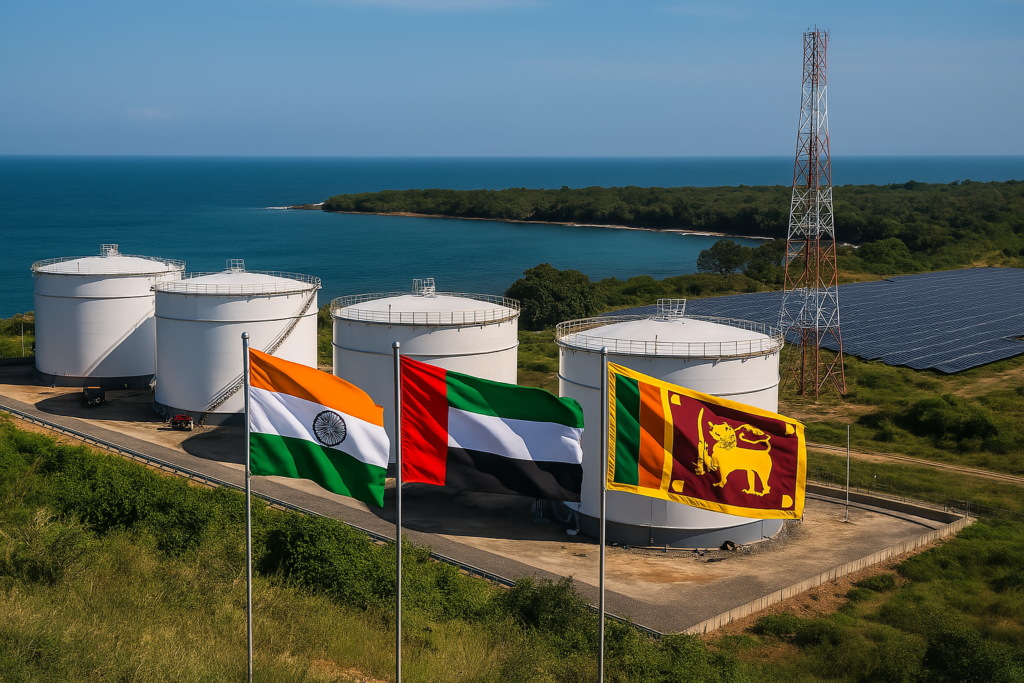In a profound intertwining of geopolitics and energy, India and the United Arab Emirates (UAE) have signed a pragmatic agreement with Sri Lanka for the construction of a major energy hub in the eastern port town of Trincomalee, as New Delhi intensifies its engagement in the island nation’s affairs against the backdrop of emerging competition with China.
The aforementioned trilateral agreement was signed during Indian PM Narendra Modi‘s official visit to Sri Lanka, the first-ever global leader to do so ever since the country’s president, Anura Kumara Dissnayake, assumed office in September.
Trincomalee: The Next Strategic Energy Corridor
The proposed Trincomalee energy hub will involve the construction of a multi-product energy pipeline at the natural deep-water harbour of Sri Lanka and possibly some revival of an ancient World War II oil tank farm, part of which is under the management of Indian Oil Corporation’s Sri Lankan subsidiary.
According to Indian Foreign Secretary Vikram Misri, the UAE’s inclusion reflects its role as India’s strategic energy partner, with precise project roles to be finalised through business-to-business negotiations.
“The UAE is a strategic partner for India in the energy space and therefore was an ideal partner for this exercise that is being done for the first time in the region,” he said in Colombo.
The next step will be to identify business entities to undertake feasibility and financing studies for the energy hub.
Countering the Increasing Chinese Footprint
So, with the growing engagements of China with Sri Lanka, the energy agreement underscores India’s growing strategic assertiveness along the Indian Ocean. This backdrop includes investments into Sri Lanka by China, especially with Sinopec’s oil refinery project for $3.2 billion at Hambantota near the Chinese-leased port.
With this partnership with the UAE and Sri Lanka, India is trying to balance against Chinese influence and to see Trincomalee function as the counterweight to the Chinese-led infrastructure developments at Hambantota.
Beyond Energy: Solar, Grid Connectivity, Healthcare & Digitalisation
During the visit, Prime Minister Modi inaugurated a $100-million solar project, a joint venture of India’s National Thermal Power Corporation (NTPC) and the Ceylon Electricity Board, and thus indicated India’s growing footprint in Sri Lanka’s renewable energy development.
Further agreements were signed covering:
- Cross-border power grid connectivity
- Digital transformation initiatives
- Security cooperation
- Healthcare partnerships
Debt Restructuring & Financial Recovery
India also reaffirmed its commitment to Sri Lanka’s economic recovery, with Foreign Secretary Misri confirming that India and Sri Lanka have completed talks on debt restructuring. Sri Lanka owes approximately $1.36 billion to India via EXIM Bank and State Bank of India, according to Colombo’s Finance Ministry.
The agreement is part of larger negotiations subsequent to Sri Lanka’s sovereign debt default in 2022, which triggered negotiations with India, Japan, and China, its main bilateral creditors.
Conclusion: A Strategic Realignment in the Indian Ocean
The agreement among India, the UAE, and Sri Lanka represents a major realignment in regional energy and diplomatic cooperation, with Trincomalee becoming a new regional energy corridor. India, on one hand, with stabilising partnerships by the use of strategic-political and infrastructure diplomacy, is able to counter China farther inside the Indian sphere of influence, while on the other hand, it advances its steadfast policy of Act East and Neighbourhood First.
Source- Reuters

